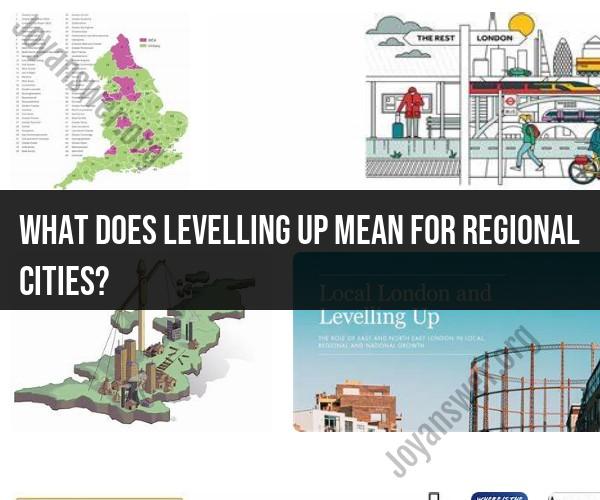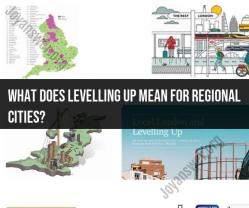What does levelling up mean for regional cities?
"Levelling up" is a term commonly used in the context of government policy and economic development, particularly in the United Kingdom. It refers to efforts to reduce regional inequalities by promoting growth and development in less prosperous or economically disadvantaged areas, such as regional cities and towns. Here's what "levelling up" means for regional cities:
1. Reducing Regional Disparities: The primary goal of levelling up is to address regional disparities in economic prosperity, opportunities, and quality of life. In many countries, including the UK, there is often a significant economic divide between major cities and regions outside of major urban centers. Levelling up aims to narrow this gap.
2. Investment in Infrastructure: Governments may allocate funding and resources to invest in infrastructure projects in regional cities. This can include improvements in transportation networks (roads, railways, public transit), broadband connectivity, and public facilities. The aim is to make these areas more attractive for businesses and residents.
3. Support for Business and Industry: Levelling up policies often include measures to support local businesses and encourage the growth of industries in regional cities. This can involve tax incentives, grants, and initiatives to stimulate economic activity.
4. Education and Skills Development: Promoting education and skills development is crucial for levelling up efforts. Governments may invest in local schools, colleges, and vocational training centers to provide residents with the skills needed for employment in growing industries.
5. Access to Healthcare and Services: Access to healthcare and essential services is essential for regional development. Levelling up may involve building new healthcare facilities and ensuring access to essential services like childcare and social support.
6. Affordable Housing: Housing affordability is a key consideration in levelling up. Efforts may be made to increase the availability of affordable housing in regional cities, making it easier for people to live and work in these areas.
7. Support for Innovation and Research: Encouraging innovation and research can boost regional economies. Governments may invest in technology parks, research centers, and innovation hubs in regional cities to stimulate entrepreneurship and knowledge-based industries.
8. Job Creation: Attracting businesses and industries to regional cities can result in job creation. This, in turn, can lead to increased economic activity and a higher standard of living for residents.
9. Community Engagement: Local communities often play a significant role in shaping the development of their regions. Governments may engage with local communities, businesses, and organizations to ensure that levelling up efforts align with the needs and aspirations of the people living in these areas.
10. Sustainability: Sustainable development is a key consideration. Levelling up policies may include measures to protect the environment, promote green industries, and create sustainable, long-term growth.
In summary, "levelling up" for regional cities involves a holistic approach to addressing regional disparities by focusing on economic development, infrastructure improvement, education, healthcare, and community engagement. The specific strategies and initiatives can vary from one country or region to another, but the overarching goal is to create more balanced and prosperous regions, ensuring that no area is left behind in terms of economic opportunities and quality of life.



